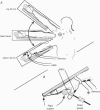Abstract
1. The effects of hydrostatic changes in perfusion pressure on performance of working fatigue-resistant muscle fibres in the hand were studied in six normal subjects. 2. Supramaximal stimuli were delivered in trains of 200 ms duration, at 1 train S-1, to the ulnar nerve proximal to the wrist to produce isometric contractions of adductor pollicis. The force of contraction was measured and, after a level contraction force was achieved, the arm was passively raised or lowered. 3. Lifting the hand 45 cm above the heart produced a decline in force output from the muscle within several seconds which, after 4 min, fell by 22% below the steady-state level. Lowering the hand 45 cm below heart level produced an 8% increase in force output. Greater changes in force output occur at higher workloads. 4. It is concluded that in human subjects, muscle performance is sensitive to changes in perfusion pressure that occur across the physiological range. At moderate work levels, force output of the working muscles in the hand can vary by up to 30% over the physiological range of blood pressure. This dependence of muscular force on blood perfusion is of potential importance to motor control during normal activities.
Full text
PDF
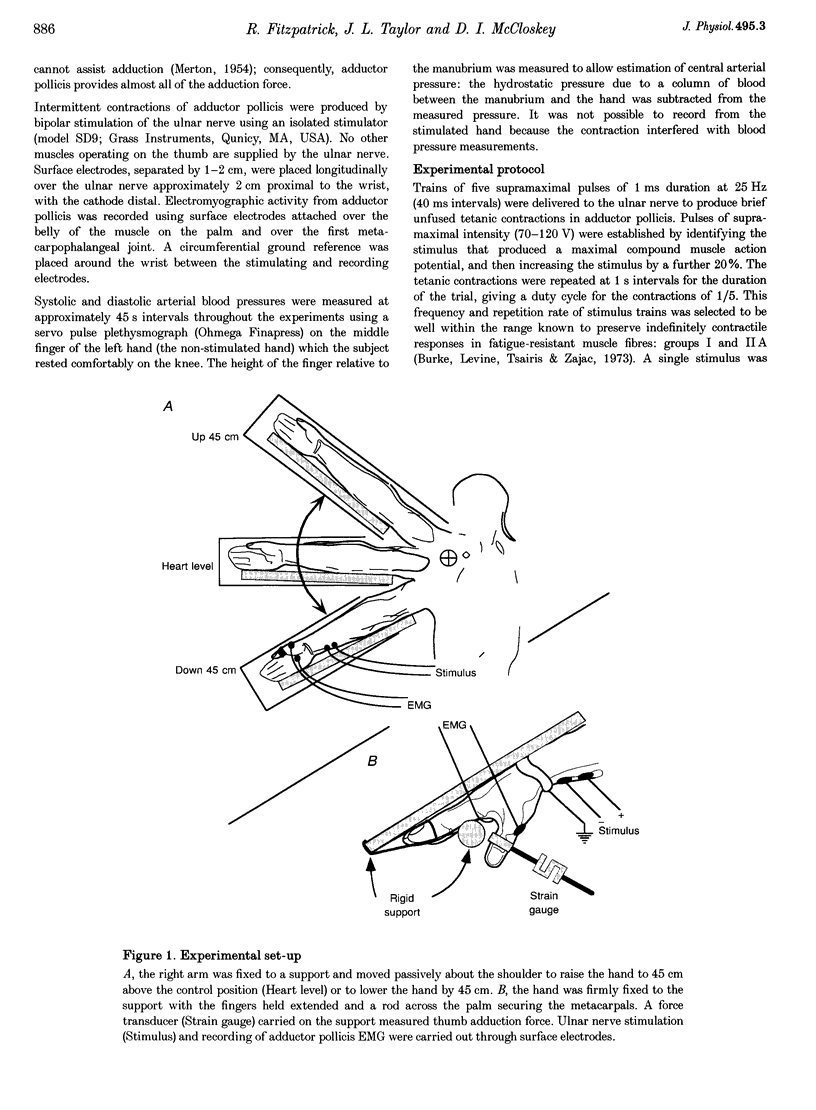
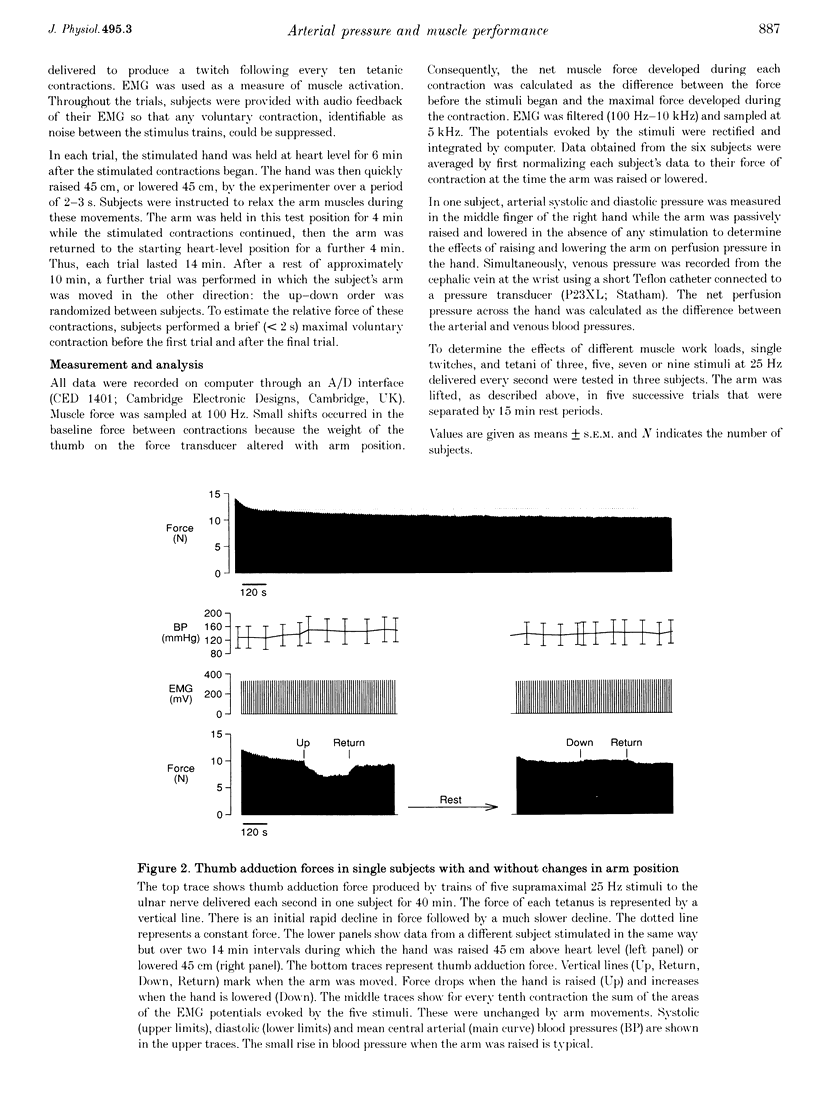
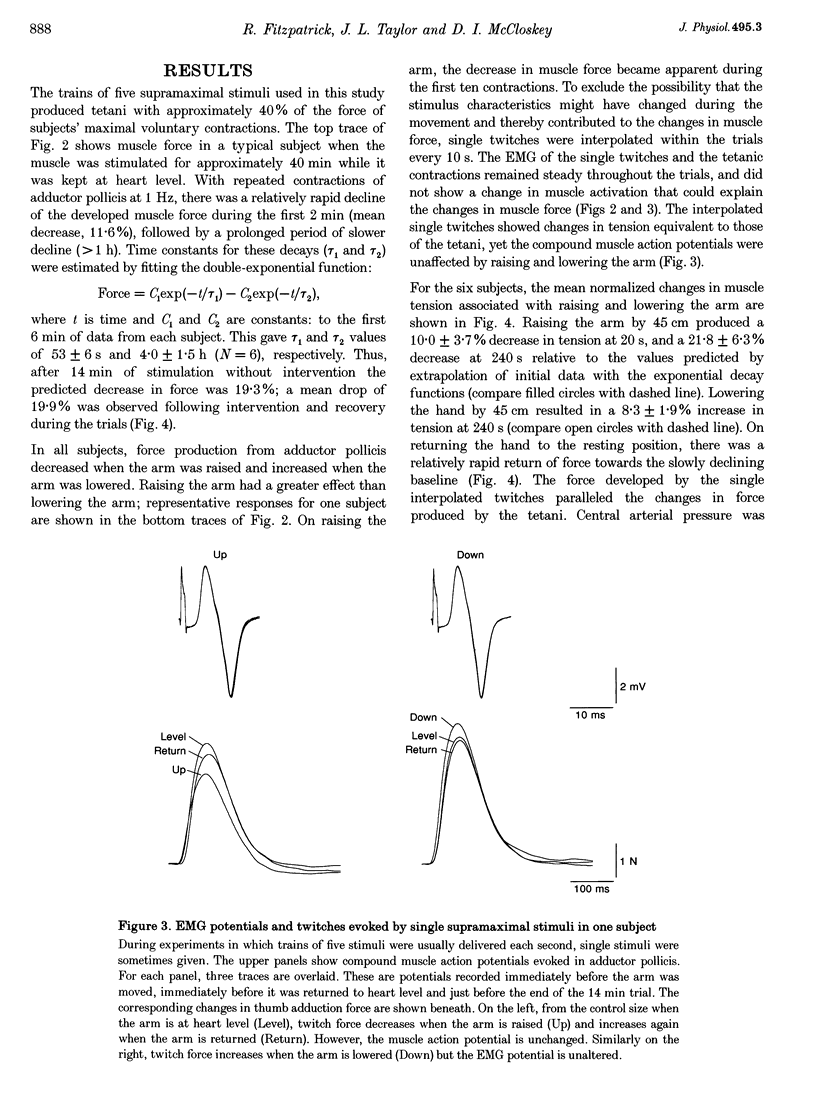
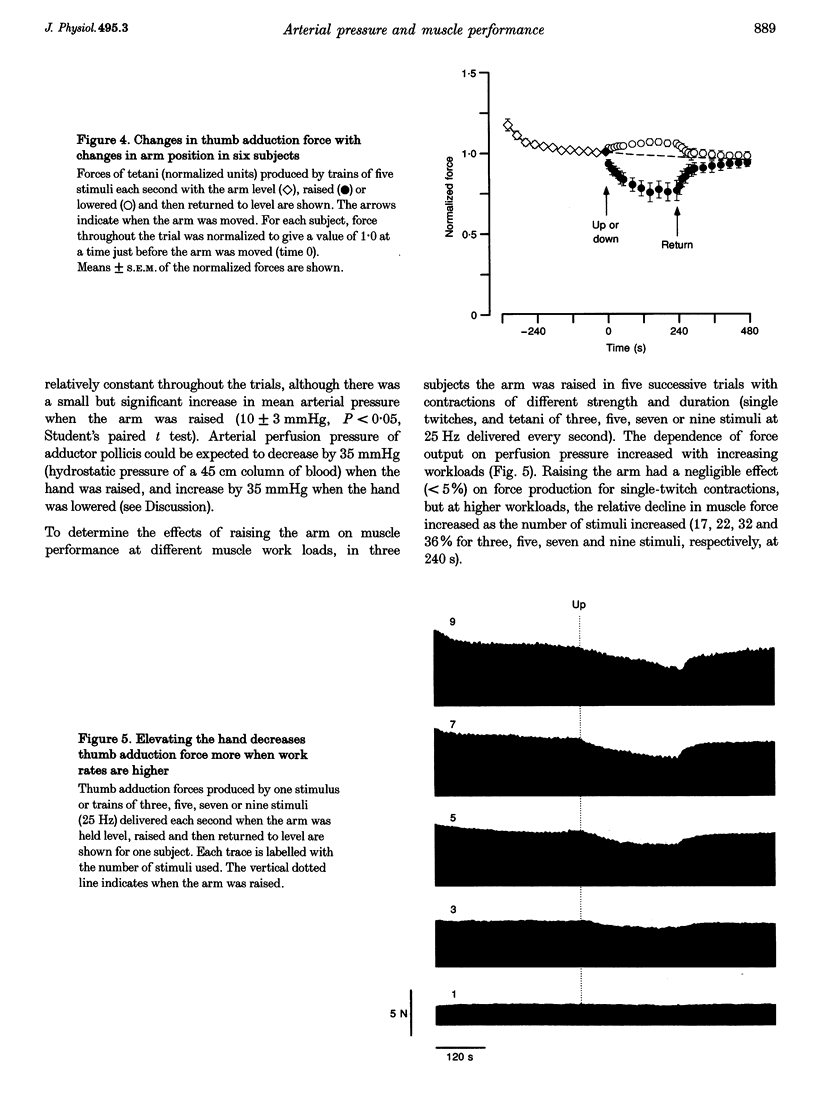


Images in this article
Selected References
These references are in PubMed. This may not be the complete list of references from this article.
- Barclay J. K. A delivery-independent blood flow effect on skeletal muscle fatigue. J Appl Physiol (1985) 1986 Sep;61(3):1084–1090. doi: 10.1152/jappl.1986.61.3.1084. [DOI] [PubMed] [Google Scholar]
- Burke R. E., Levine D. N., Salcman M., Tsairis P. Motor units in cat soleus muscle: physiological, histochemical and morphological characteristics. J Physiol. 1974 May;238(3):503–514. doi: 10.1113/jphysiol.1974.sp010540. [DOI] [PMC free article] [PubMed] [Google Scholar]
- Burke R. E., Levine D. N., Tsairis P., Zajac F. E., 3rd Physiological types and histochemical profiles in motor units of the cat gastrocnemius. J Physiol. 1973 Nov;234(3):723–748. doi: 10.1113/jphysiol.1973.sp010369. [DOI] [PMC free article] [PubMed] [Google Scholar]
- Eiken O. Responses to dynamic leg exercise in man as influenced by changes in muscle perfusion pressure. Acta Physiol Scand Suppl. 1987;566:1–37. [PubMed] [Google Scholar]
- Essén B., Jansson E., Henriksson J., Taylor A. W., Saltin B. Metabolic characteristics of fibre types in human skeletal muscle. Acta Physiol Scand. 1975 Oct;95(2):153–165. doi: 10.1111/j.1748-1716.1975.tb10038.x. [DOI] [PubMed] [Google Scholar]
- Gandevia S. C., McCloskey D. I. Changes in motor commands, as shown by changes in perceived heaviness, during partial curarization and peripheral anaesthesia in man. J Physiol. 1977 Nov;272(3):673–689. doi: 10.1113/jphysiol.1977.sp012066. [DOI] [PMC free article] [PubMed] [Google Scholar]
- HIRVONEN L., SONNENSCHEIN R. R. Relation between blood flow and contraction force in active skeletal muscle. Circ Res. 1962 Jan;10:94–104. doi: 10.1161/01.res.10.1.94. [DOI] [PubMed] [Google Scholar]
- Hobbs S. F., McCloskey D. I. Effects of blood pressure on force production in cat and human muscle. J Appl Physiol (1985) 1987 Aug;63(2):834–839. doi: 10.1152/jappl.1987.63.2.834. [DOI] [PubMed] [Google Scholar]
- Johnson M. A., Polgar J., Weightman D., Appleton D. Data on the distribution of fibre types in thirty-six human muscles. An autopsy study. J Neurol Sci. 1973 Jan;18(1):111–129. doi: 10.1016/0022-510x(73)90023-3. [DOI] [PubMed] [Google Scholar]
- MERTON P. A. Voluntary strength and fatigue. J Physiol. 1954 Mar 29;123(3):553–564. doi: 10.1113/jphysiol.1954.sp005070. [DOI] [PMC free article] [PubMed] [Google Scholar]
- McCloskey D. I., Mitchell J. H. Reflex cardiovascular and respiratory responses originating in exercising muscle. J Physiol. 1972 Jul;224(1):173–186. doi: 10.1113/jphysiol.1972.sp009887. [DOI] [PMC free article] [PubMed] [Google Scholar]
- Milner-Brown H. S., Stein R. B., Yemm R. The orderly recruitment of human motor units during voluntary isometric contractions. J Physiol. 1973 Apr;230(2):359–370. doi: 10.1113/jphysiol.1973.sp010192. [DOI] [PMC free article] [PubMed] [Google Scholar]
- Sundberg C. J., Kaijser L. Effects of graded restriction of perfusion on circulation and metabolism in the working leg; quantification of a human ischaemia-model. Acta Physiol Scand. 1992 Sep;146(1):1–9. doi: 10.1111/j.1748-1716.1992.tb09386.x. [DOI] [PubMed] [Google Scholar]



